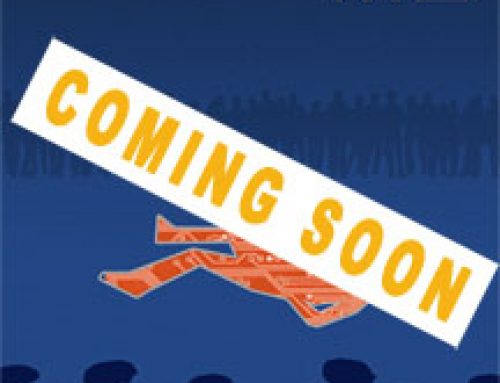I started out with screenplays when I decided to become serious about writing. I figured that since I didn’t do a lot of recreational reading, but did watch a lot of movies and TV, that it would be an easier medium. Now, a couple of decades later, I don’t think it’s really easier or harder than writing a novel. They both have their smooth bits and their rough patches.
In some ways, the economical way you have to write a screenplay helped considerably with the more narrative forms. The screenplay trains you to write visually and to create the illusion of realistic speech.
One important factor to keep in mind is that there is a fair amount of wiggle room for any screenwriter in terms of content and style as long as the screenplay format is adhered to. Certainly established writers can get away with a lot more than someone trying to break in. Also preferred styles have a nasty habit of changing over time. Since my scripts have been considered to be “good reads” over the years, I’m basing what I say here on my own style, so your mileage/meterage may vary.
I’m not going to outline the specifics about formatting metrics, but instead consider what goes in between the margins.
The general rule of thumb is less is more. One complaint heard from readers is that there is “too much black stuff” on a page. That is, too many words, not enough white space. This is often a result of a writer trying to over-describe settings, to direct on the page, or to write speeches that make many actors wince.
Here’s an example from the first page of the first draft of the first screenplay I wrote:

Ouch (I can’t begin to tell you how hard it is to post that). Look at all that black stuff. Here’s how I would do it now:
FADE IN:
INT. AITEK COMPUTER RESEARCH LAB
Racks of computers and electronics in various states of assembly fill the cavernous lab.
SARRAH THOMAS, a genius in her mid-to-late twenties, sits
at a soldering station, putting the final touches on a
candy-bar-sized electronic component.
What. A. Difference. The first example is obviously nowhere near as economical as the second. The first example is very similar to what I’ve generally read from beginning screenwriters. The second, from produced screenwriters. The success of the second isn’t just from using fewer words, but from understanding the job of the screenwriter. A good screenwriter understands that in the collaborative process that is film making, no one likes some snot-nose from another of the disciplines telling them how to do their job. In fact, the more you try to tell them how to do their jobs, the more likely they are to totally ignore it.
Truth of the matter is that many actors often don’t read any of the action/direction stuff anyway. They read the dialog, highlighting only their lines. And while many directors won’t kill you if you throw in the occasional “ANGLE ON” or “SMASH CUT TO:”, they will certainly sneer mightily if you describe every punch thrown in a fight scene (in fact, the stunt coordinator is going to be sending dirty looks at you, too). As for dialog…as much as possible, keep it short and sweet. An awful example, again from my first draft first screenplay:

Sad to say, this is part of several pages of equally dreadful exposition. Even the trick of breaking up dialog with small bits of action doesn’t help. I’d probably cut this whole scene out entirely (if I wrote it at all), but for the sake of argument, if I REALLY thought I had to have it in my script, I’d write something like:
DIANA
My mother died when I was two. My father raised me as best he could in Europe, then sent me off to various schools when I was older. I was going to Bowker when Sarrah asked me to be her assistant. And here we are.
Even here, it would kill me to have such a big hunk of exposition. Sometimes that just happens and it’s best to simply get it out of the way as quickly as possible.
My general rule of thumb with dialog is no more than three lines (fewer are better) unless I have a really, really, good story-centric reason for doing otherwise.
Now, for a cleaner example of how to handle a “moment”, here’s a snippet from a much more recent screenplay:

I hope you can see the difference. Even though the writing here is very economical, there is definitely a lot of sub-text going on. There is room for the director and the actors to work out their jobs. The screenwriter is doing only what is necessary to get the best out of everyone.
You also need to be aware of your pacing — what are the beats of a scene? A good example comes from the end of the previous excerpt, where you have one line of action, a line break, and then you complete the action. This is where you let the actors act. “Jennifer doesn’t know what to say” isn’t exactly an action, but it serves as an acting motivation. It can be played many different ways…which is a choice for the actor and/or director; not the writer.
The line break inserts a natural pause without the too-often-seen “(beat)”. You don’t really have to type a direction like that if you pace the scene correctly. It just naturally occurs.
“But CJ,” I can hear the cry, “I just got a copy of the BLABBLEMURPH script and it has tons of direction and camera movements and stuff. What about that?”
That is a very fair complaint. There are a lot of things to consider when you acquire scripts. You need to be sure it is an actual copy of an official script draft. Too often, you’ll find scripts that are really transcripts of already produced movies or television shows. The quality of the transcription varies a lot. Some are quite good and almost indistinguishable from a production script and others look like someone did little more than capture the closed captioning data.
Let’s assume you are looking at a real script. Is it an early draft or a shooting draft? Shooting drafts are often more detailed so that all the disciplines know what is going on…especially important in these days of CGI and green screens. Also, if the writer is also the director, they know that they don’t have to follow the standard economies, and thus put in more detail.
Then you get TV, where it seems like every show has its own takes on format — sometimes including snide writer asides inserted into the script.
But for the person trying to break into the Hollywood writing scene, you pretty much need a clean and efficient script that is neither too lean nor too bloated. Generally speaking, letting as much of the unblemished paper show on each page as possible is a good start to winning the hearts of the gatekeepers of the film world: the readers.
So…pare down both action and dialog into easy to digest bits, let the paper be seen, and step out of the way because word density is no longer going to be an excuse that can be used to reject your work.





